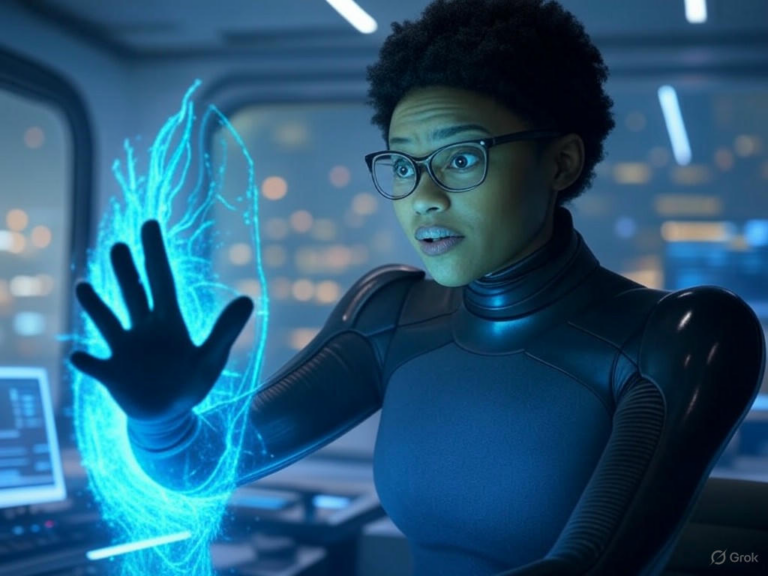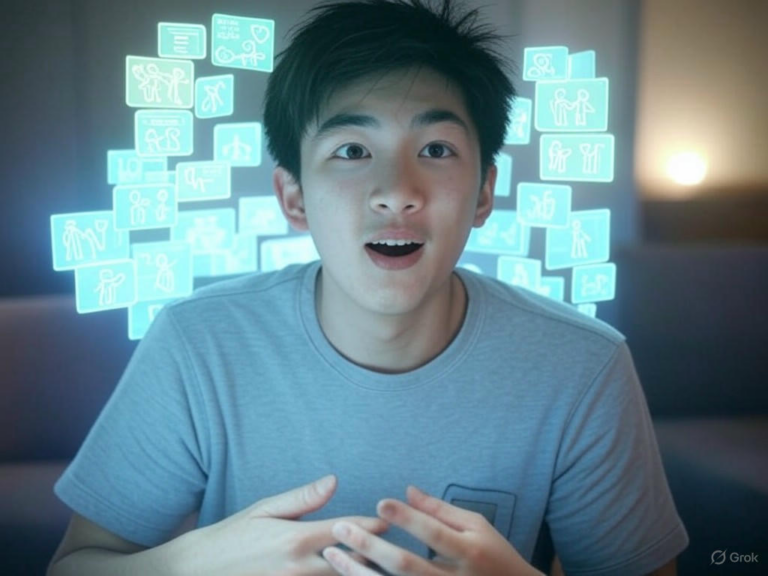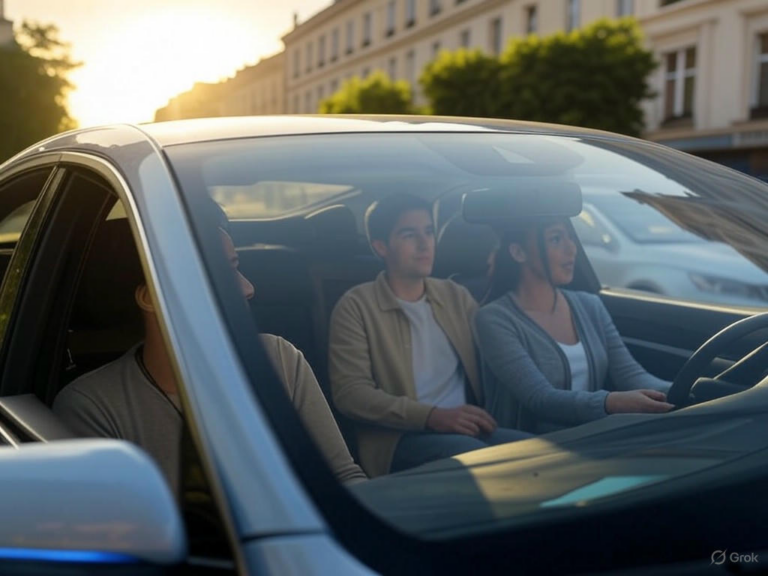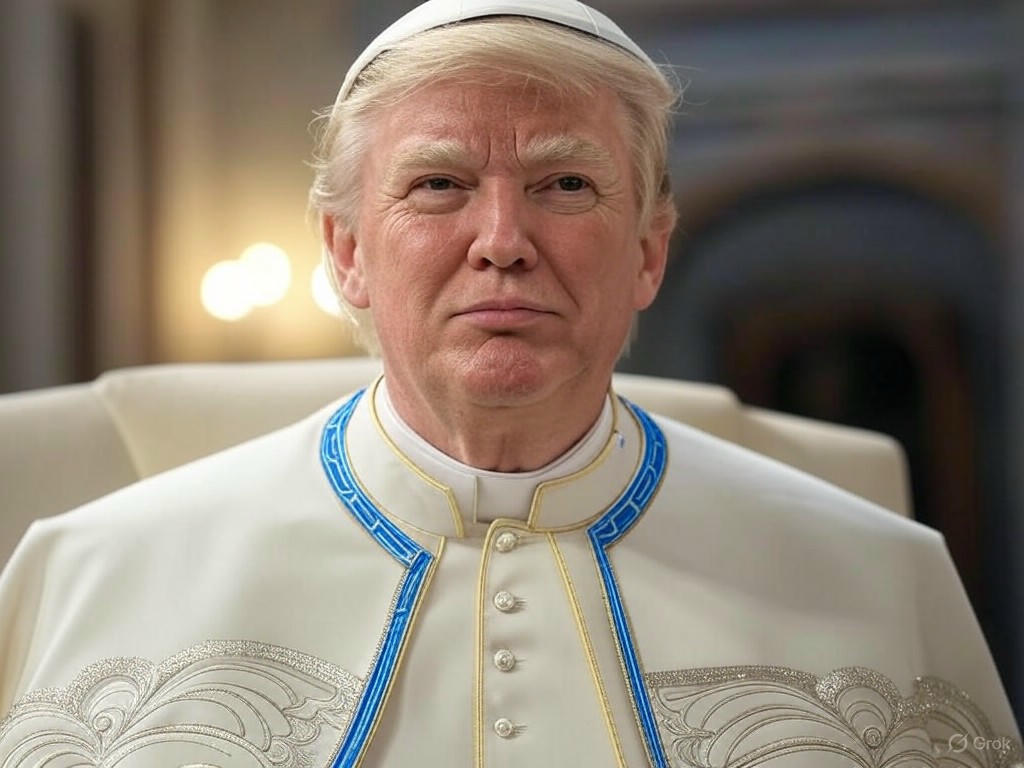
Trump AI-Generated Photo as Pope Sparks Online Buzz
In a world where social media can turn a quirky image into a global talking point, Donald Trump’s sharing of an AI-generated photo depicting himself as Pope has captured everyone’s attention. This Trump AI-generated photo as Pope, posted on Truth Social and amplified by White House channels, landed just days before a major Vatican event, stirring up debates across political and religious lines. It’s a prime example of how technology is reshaping public discourse, and it’s got people asking: What happens when humor meets high-stakes diplomacy?
The Story Behind Trump’s AI-Generated Photo as Pope
The buzz started when President Trump shared a digitally crafted image of himself in full papal attire, complete with a white cassock and traditional accessories. This Trump AI-generated photo as Pope emerged amid a sensitive period, right before the Vatican conclave set for May 7, following Pope Francis’s passing on Easter Sunday. It all began as a lighthearted comment from Trump himself, where he quipped about wanting the top spot at the Vatican during a chat with reporters.
He even name-dropped New York Cardinal Timothy Michael Dolan, calling him a strong candidate, though experts say Dolan isn’t a front-runner. Imagine the scene: a US president joking about leading the Catholic Church—it’s equal parts entertaining and eyebrow-raising. This moment highlights how AI tools can turn a simple idea into something that spreads like wildfire, making us think about the power of digital creativity in everyday politics.
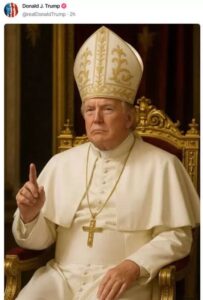
Timing and Context: Why This Trump Photo Hit a Nerve
The release of this Trump AI-generated photo as Pope couldn’t have come at a more charged time. Trump had just returned from attending Pope Francis’s funeral in late April, where he also squeezed in a meeting with Ukrainian President Volodymyr Zelenskyy to talk about ending the Russia conflict. That mix of diplomacy and mourning set the stage for what felt like an unexpected twist.
Some see it as poorly timed humor; others view it as Trump’s signature style of pushing boundaries. Have you ever shared something online that seemed funny at the time but later caused a stir? It’s a relatable slip-up, but when it involves a world leader, the stakes skyrocket.
White House’s Role in Amplifying the Trump AI Image
What started as a personal post gained momentum when the White House shared it officially, blurring the lines between casual fun and formal communication. This move raised questions about whether such content fits the dignity of the presidency, especially with the papal succession looming. Critics argue it trivializes a sacred process, while supporters call it just another example of Trump’s unfiltered approach. In today’s digital age, every share can amplify a message—good or bad—so it’s worth asking: How do we balance personality with protocol in public office?
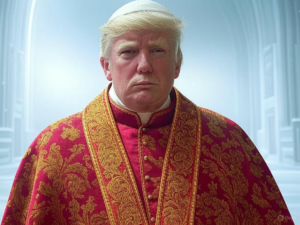
AI-Generated Content: The Rising Trend Fueling Controversy
AI-generated images like the Trump AI-generated photo as Pope are becoming commonplace, thanks to tools that turn text into realistic visuals almost instantly. This incident underscores the double-edged sword of such technology: it’s innovative, but it can also mislead or offend. As these tools grow more advanced, they’re popping up everywhere from marketing to politics, forcing us to confront their ethical implications.
Think about how easy it is now to create something that looks utterly real—it’s changed the game for content creators and consumers alike. But with great power comes great responsibility, and this case shows why we need clearer guidelines.
Key Concerns Surrounding AI-Generated Images
Worries about AI-generated content have escalated, with platforms like Google cracking down on anything that feels like clickbait. For instance, Google’s updated spam policies aim to sideline low-quality AI-driven material, prioritizing stuff that actually helps users. In the context of the Trump AI-generated photo as Pope, this highlights broader fears about misinformation, especially when it involves public figures. If we’re not careful, these tools could erode trust in what we see online—have you ever second-guessed a photo because it seemed too perfect?
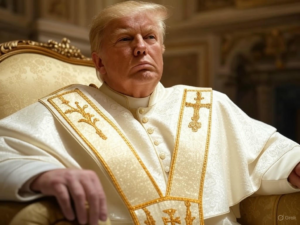
Broader Implications: Politics, Religion, and AI
The Trump AI-generated photo as Pope touches on deep-seated issues, intersecting American politics with the global Catholic community of over 1.3 billion people. In the wake of Pope Francis’s death, the Church is in a reflective phase, making this image feel like an untimely jest to some. It’s a reminder of how technology can inadvertently stir religious sensitivities, even if the intent was playful.
This event prompts us to consider the long history of US-Vatican ties, from formal relations starting in 1984 to Trump’s own tense meetings with Pope Francis over topics like immigration. Picture this: a US president using AI to poke fun at a role that’s been held by figures like Francis—it’s a modern twist on an age-old relationship.
Historical Ties and the Trump Pope Image Fallout
US-Vatican diplomacy has seen its ups and downs, with presidents engaging on everything from human rights to global conflicts. Trump’s first-term interactions were notably fraught, adding layers to this AI-generated depiction. Now, as AI evolves, it’s reshaping how we handle these diplomatic nuances, potentially leading to more cross-cultural misunderstandings. What if future leaders use similar tactics—could it foster dialogue or just fuel division?
Public Reactions to the Viral Trump Image
Responses to the Trump AI-generated photo as Pope have been as divided as ever, with Trump’s base cheering it as bold humor and critics decrying it as disrespectful. Social media exploded with memes, debates, and everything in between, showing how quickly these things go viral. Media outlets ranged from amused to alarmed, framing it as either a quirky headline or a sign of eroding norms.
Religious figures voiced concerns about mocking sacred institutions, while others defended it as harmless satire. It’s fascinating how one image can spark such a spectrum of opinions—do you remember the last time a single post dominated your feed like this?
The Road Ahead for AI in Politics
As we look at the future, the Trump AI-generated photo as Pope serves as a wake-up call for how AI might transform political communication. With tools getting smarter, politicians could use them to craft engaging content, but there’s a risk of blurring reality and fabrication. This could challenge media literacy, making it tougher for the public to discern what’s genuine.
To navigate this, experts stress the need for human oversight in AI use. For instance, when creating content, always add your own insights and checks to ensure it’s accurate and sensitive.
Tips for Responsible AI Use in Content Creation
If you’re dabbling in AI for your own projects, start by blending it with human expertise—think of it as a co-pilot, not the driver. Tools like those from Google can help, but remember to review for biases or inappropriateness, as seen in the Trump case. Here are a few quick tips: First, test AI outputs for accuracy; second, add personal touches like real examples; and third, always consider your audience’s context. By doing so, you can create content that’s engaging without crossing lines—after all, who wants to unintentionally spark a controversy?
Wrapping It Up: Lessons from the Trump AI Photo
In the end, the Trump AI-generated photo as Pope is more than just a fleeting viral moment; it’s a snapshot of our tech-driven world where politics, religion, and innovation collide. While some will laugh it off, others see it as a nudge for better guidelines on AI use by leaders. This incident reminds us to tread carefully in this digital era, balancing creativity with respect.
As you reflect on this story, consider how AI is changing the way we interact online. What are your thoughts—do you think it’s all in good fun, or a step too far? We’d love to hear your views in the comments below, and feel free to share this article or check out our other pieces on tech and politics for more insights.
References
1. Euronews. “Donald Trump stirs controversy after posting image of himself as the Pope.” Link.
2. YouTube video on related events. Link.
3. 2 Oddballs Blog. “Using AI to Write Your SEO Blogs? Be Careful!” Link.
4. YouTube video on AI content strategies. Link.
5. Grow Traffic. “How to Produce the Best AI Prompt to Generate SEO-Optimised Blog Content.” Link.
6. Marengo Library Catalog. Link.
Trump AI-generated photo as Pope, AI-generated Trump image, Trump pope controversy, White House AI buzz, papal conclave reactions, Pope Francis funeral, AI in politics, religious image scandal, viral Trump photo, US-Vatican relations

